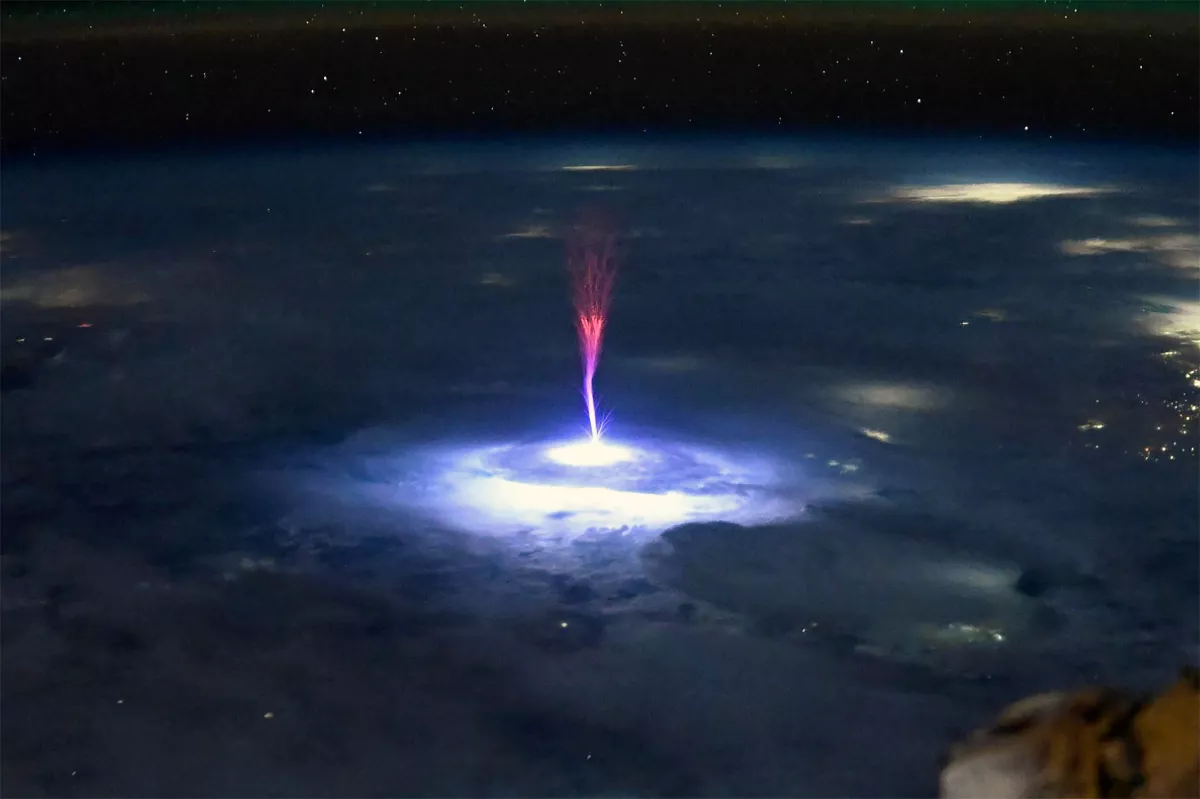NASA astronauts provide new view of extraordinary event witnessed on ISS PHOTO
While most people witness only thunder and lightning during storms, spectacular electric displays occur far above, dozens kilometres above us which is easily visible from the International Space Station (ISS). These brief, brilliantly coloured phenomena—blue jets, red sprites, violet halos, ultraviolet rings—are collectively called transient luminous events, or TLEs.
For decades, TLEs were known only through pilot reports and rare photographs. The ISS, hovering above Earth’s storms, has transformed their study. Equipped with specialized cameras and sensors, astronauts can now capture these fleeting flashes in unprecedented detail which they recently shared. According to an article published on the Earth platform, researchers are learning that TLEs can affect radio transmissions, influence aircraft safety, and even alter the chemistry of the upper atmosphere.
Central to this research is the Atmosphere–Space Interactions Monitor (ASIM), developed by the European Space Agency and mounted externally on the ISS since 2018. ASIM watches Earth for flashes smaller than a fingernail and shorter than a heartbeat. Its high-speed cameras and photometers have revealed phenomena previously invisible from the ground.

For example, certain discharges at the tops of thunderclouds can inject electromagnetic energy into the ionosphere, producing enormous ultraviolet rings called ELVES. These rings can carry charge across hundreds of miles, potentially disrupting long-distance radio signals. ASIM has also documented ultra-brief corona discharges—so short that ground instruments often miss them. By analysing these events, scientists are beginning to understand how clouds prime the atmosphere for full-scale lightning.
Other TLEs, like “red sprites,” appear as upside-down jellyfish in the mesosphere for mere milliseconds, while blue jets shoot silently from cloud tops toward the stratosphere. These events happen so fast and high that capturing their details was once nearly impossible. ASIM, however, can observe them from orbit, offering data critical to understanding lightning’s behavior at its source.
Astronauts have also contributed via the ISS cupola, the seven-window observation dome. Through ESA’s Thor-Davis experiment, crew members attach high-speed cameras behind the glass to film storms at up to 100,000 frames per second. The resulting slow-motion footage reveals electrical filaments branching in ways never predicted by textbooks, helping validate laboratory plasma studies.
Beyond pure science, the article notes that this research has practical applications. Detailed observations of TLEs and lightning behavior could improve early-warning algorithms for power-grid operators, offering better protection against severe storms and lightning-induced outages. By combining orbital sensors with crew-operated cameras, the ISS has become a unique platform for unraveling the secrets of the upper atmosphere’s most fleeting electrical displays.
By Nazrin Sadigova








